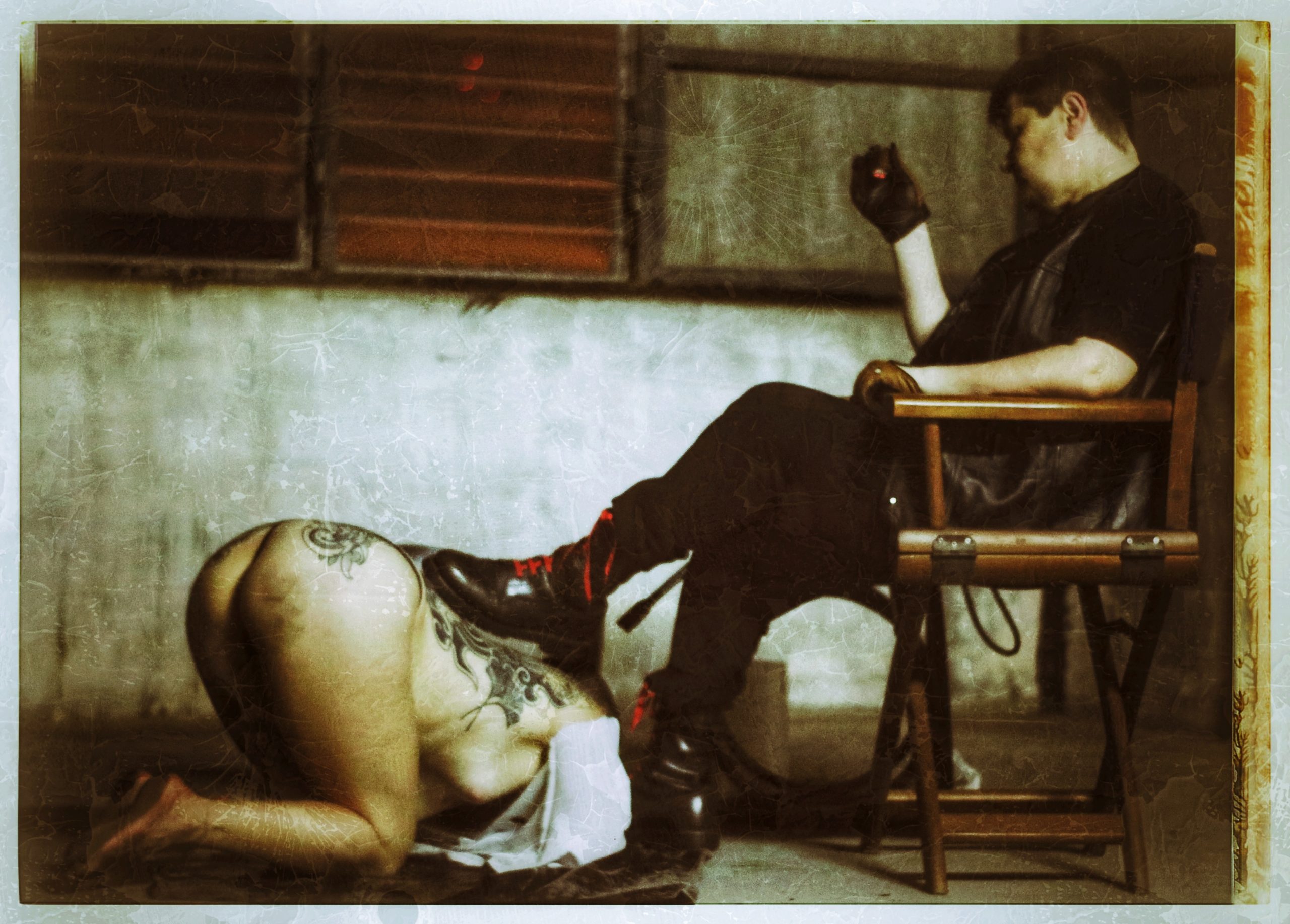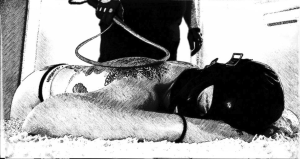Cigar play brings together service, sensation, control, and ritual in ways that can be deeply personal and powerful. It carries physical risks, emotional risks, and responsibilities for everyone involved. Good negotiation is not just about setting limits, it’s about building a shared understanding before the first cigar is even lit.
These prompts are here to help you put words to what you want, what you need, and what you are not willing to accept, so you can create scenes with confidence and clarity.
SECTION 1: INTENT AND SCENE DYNAMICS
1. What draws you to cigar play? What interests or intentions are you bringing into this scene?
Top & Bottom: Communicate their motivation – service, sensation, ritual, fear, ownership.
Helps protect against mismatch. Clarifies their focus, whether it’s discipline, aesthetics, dominance, or personal ritual.
2. What kind of energy or tone do you want the scene to have? (e.g. formal, playful, erotic, intense, ritual-focused)
Top & Bottom: Protect against unwanted mood shifts – too casual, too aggressive, too sexualised.
Top: Helps set a clear emotional frame to build presence and connection.
3. Is this a stand-alone cigar scene or part of a larger dynamic or ritual?
Top & Bottom: Sets the emotional weight and boundaries of their experience.
Top: Guides pacing, depth, and the layering of control or service.
SECTION 2: EXPERIENCE, COMFORT, AND EDUCATION
4. What experience do you have with cigar play, if any?
Top & Bottom: Signal their familiarity with risks, rituals, or needed support.
More experienced partner: Shares risk concerns, offers explanations or direction to explore.
5. Are you comfortable playing with partners who have more or less experience than you?
Top & Bottom: Protect their agency in choosing who leads or shares knowledge.
Top: Helps shape their approach based on trust and skill-sharing.
SECTION 3: RISK, HEALTH, AND CONSENT LIMITS
6. Do you have any health concerns that could affect this scene? (e.g. asthma, heart conditions, medications, skin sensitivities)
Top & Bottom: Name risks clearly to protect themselves.
Top: Shapes their choices around safety and care.
7. Are you okay with receiving marks, burns, or possible scars?
Bottom: Defines the line between a lasting memory and a permanent mark.
Top: Communicates their boundaries on physical marking. Prevents misjudging what level of intensity is truly consented to.
8. How much risk are you willing to take in this scene?
(e.g. low-risk sensation → edge play → intentional branding)
Top & Bottom: Offer a shorthand for how hard or soft they want the scene to go.
Top: Sets clear lanes for escalation or for restraint.
SECTION 4: EMOTIONAL FRAME AND TRIGGERS
9. Are there any emotional or psychological triggers to share?
Top & Bottom: Protect themselves by naming vulnerabilities early.
Keeps them from unintentionally causing harm.
10. Are there words, gestures, or behaviours that should be off-limits?
Top & Bottom: Draw clean boundaries around their style and power dynamics.
Top: Keeps their control affirming, not violating.
11. What emotional responses are possible during or after the scene? (e.g. fear, catharsis, shame, drop, arousal)
Bottom: Normalises emotional openness. Check how that aligns with the top’s emotional boundaries.
Top: Sets their own emotional boundaries. Prepares them to meet the bottom where they are, not where they expect them to be.
SECTION 5: SAFETY AND COMMUNICATION
12. What safeword(s) will you use?
Bottom: Establishes a clear emergency brake.
Top: Supports full scene control without confusion.
13. Do you have any non-verbal signals you’ll use if you can’t speak?
Bottom: Adds backup safety when breath, fear, or smoke block speech.
Top: Keeps check-ins fast and quiet without breaking tension.
14. How do you want the top to check in with you during the scene, if at all?
Bottom: Shapes the flow: minimal, discrete, open.
Top: Balances vigilance with scene integrity.
SECTION 6: SERVICE AND PROTOCOL
15. Are you offering cigar service as part of this scene?
Top & Bottom: Clarify if this is active, ceremonial, or purely sensory.Set expectations for roles before the first cut or light.
16. What parts of cigar service do you enjoy or want to avoid?
(e.g. wetting, cutting, mouth-lighting, kneeling, handling lighters, ritual phrases)
Bottom: Names what feels affirming versus forced.
Top: Builds a scene around genuine service, not obligation.
17. Are you willing to serve more than one person if the scene expands?
Bottom: States their boundaries clearly for shared spaces.
Top: Avoids unspoken discomfort at socials or public play.
SECTION 7: SMOKE AND BREATH PLAY
18. Are you comfortable with the smoke play during the scene?
Bottom: Clarifies their health and sensory consent.
Top: Prevents smoke exposure becoming non-consensual.
19. Are you okay with smoke being exhaled toward your body or face?
Bottom: Sets spatial and psychological limits around proximity.
Top: Guides positioning and handling.
20. Do you want to include smoke transfer or mouth-to-mouth inhalation?
Top & Bottom: Define consent to a highly intimate form of play.
Top: Marks the line between service, erotic, or breath control dynamics.
21. Are you open to breath control or breath restriction using smoke?
Top & Bottom: Clarify consent to an edge practice.
Top: Prevents accidental trauma or risk stacking.
SECTION 8: CONTACT, HEAT, AND ASH
22. Are you interested in non-contact cigar play (visual service only)?
Bottom: Signals if the focus is ritual, posture, presence.
Top: Adjusts pacing to build tension or presence through observation.
23. Are you open to heat or temperature play with the cigar near your skin?
Bottom: Sets the threshold for teasing sensation without touch.
Top: Offers layered options before physical escalation.
24. Are you open to ash being dropped or placed on your body, licking or eating ash?
Bottom: Defines consent to a ritual.
Top: Creates opportunities for sensory layering or service.
25. Are you okay with brief direct contact from the cigar against your skin?
Bottom: Draws the boundary between sensation and potential injury.
Top: Prevents slips from controlled to harmful.
26. Are you open to deliberate burning, stamping, or scarification?
Top & Bottom: Name consent to permanent or edge outcomes.
Top: Outlines when and if body-altering play is allowed.
27. Which body parts are okay, maybe, or off-limits for cigar play?
Bottom: Builds a map for safety and trust.
Top: Sharpens targeting, escalation, and ritual with precision.
SECTION 9: AFTERCARE AND POST-SCENE NEEDS
28. What physical aftercare helps you recover from cigar play?
Bottom: Lists what their body needs after heat, smoke, stress, or intensity.
Top: Plans for real support, not assumptions.
29. What emotional support helps you decompress after a scene like this?
Top & Bottom: Name their needs around connection, reassurance, or solitude.
Meet the scene’s end with presence, not withdrawal.
30. Do you prefer follow-up communication or check-ins after the scene?
Bottom: Opens space for continued support without pressure.
Top: Builds reliability and repair capacity after intense scenes.
This form is a tool, not a script. Use it to open conversations, set expectations, and shape your scenes in ways that feel real to you and your partners. There’s no one right way to play with cigars, what matters is that the experience you build is yours, built from clear consent, shared intent, and mutual respect.



